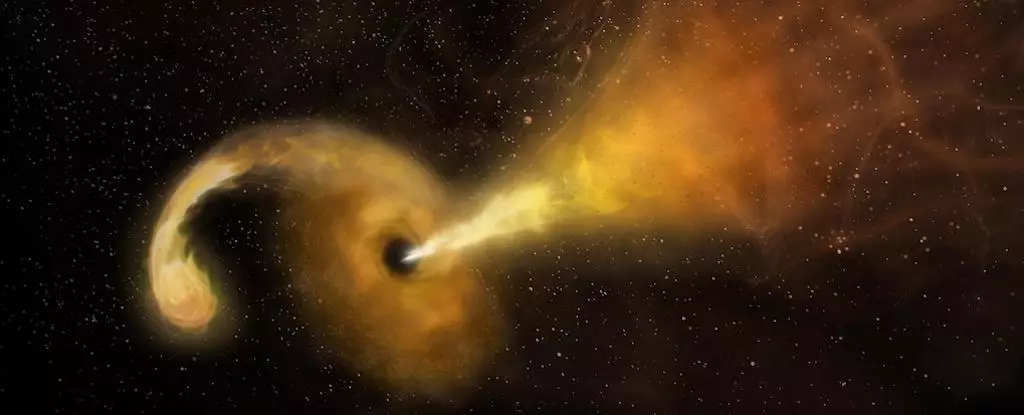In a stunning turn of events, astronomers have stumbled upon an extraordinary cosmic explosion dubbed EP240408a. First detected by the Einstein Probe, an advanced X-ray space telescope, on April 8, 2024, this rare phenomenon has sparked intense debate and curiosity within the astronomical community. Initial observations suggested it resembled a typical gamma-ray burst, which is known for releasing intense bursts of high-energy radiation, particularly X-rays. However, the coordinated observations by an array of telescopes revealed a complexity that belies a straightforward explanation.
What sets EP240408a apart from familiar cosmic events is its unique signature across a diverse spectrum of wavelengths. Astronomers employed a formidable arsenal of telescopes, including Swift, NuSTAR, and the Very Large Array (VLA), to investigate this anomaly. Despite the wealth of data collected, it became increasingly clear that EP240408a could not be neatly classified into existing categories of cosmic phenomena, leading to the tantalizing possibility that it could be something entirely new and unprecedented.
The Leading Hypothesis
The prevailing theory among researchers is that EP240408a represents the dramatic end of a white dwarf star being torn apart by a medium-sized black hole. This tumultuous interaction is thought to generate high-velocity jets of stellar material directed toward Earth. As Brendan O’Connor, astronomer at Carnegie Mellon University and lead author of the related studies, explained, “EP240408a ticks some of the boxes for several different kinds of phenomena, but it doesn’t tick all the boxes for anything.” This statement aptly captures the essence of the mystery surrounding this event — it both conforms to and diverges from our established understanding of cosmic explosions.
The characteristics of EP240408a are particularly perplexing. It initially flared in soft X-rays for a brief period before transitioning to a plateau phase that lasted several days, followed by a rapid decline. Most gamma-ray bursts typically exhibit shorter durations, lasting hours rather than days, making EP240408a an outlier among its cosmic counterparts. Moreover, its brightness falls into a puzzling category known as the “reverse-Goldilocks zone,” being too bright for some types of cosmic events yet not luminous enough for others.
Adding another layer of intrigue to the enigma, the VLA reported no detectable radio emissions from EP240408a during follow-up observations performed at various intervals after the initial flare. Historically, when astronomers encounter X-ray bright events, they often expect to find corresponding radio emissions, serving as a signature of the phenomenon. The absence of such emissions provokes skepticism surrounding the leading theories. “When we see something this bright for this long in X-rays, it usually has an extremely luminous radio counterpart,” O’Connor noted, highlighting the peculiarity enveloping this cosmic explosion.
Astrophysicists have embarked on ruling out alternative explanations for EP240408a, such as quasars or fast blue optical transients, and have settled on tidal disruption events (TDEs) as a promising avenue for understanding this mystery. During a TDE, black holes can spectacularly pull apart stars, causing jets to emit radiant light towards our observation point. Yet, the unexpected silence from the expected radio emissions raises questions. One hypothesis proposes that the event was observed too early in its development, as it may take extensive time for the ejected material to lose energy and subsequently produce detectable radio waves.
Looking ahead, astronomers are poised for future observations that may provide critical clues to the nature of EP240408a. If radio emissions do eventually emerge from this peculiar event, it could bolster the tidal disruption event hypothesis, lending credence to the theory that perhaps our understanding of cosmic phenomena needs to evolve. Conversely, if EP240408a remains an enigma, with no radio signals detected, it could redefine existing classifications and suggest that we are witnessing a unique type of transient event previously unknown to science.
The incident emphasizes the dynamic nature of the universe, brimming with transitory events created by the interplay of stars, black holes, and the vast cosmic dance occurring in the cosmos. EP240408a serves as a reminder of the mysteries that still await resolution in our exploration of the universe, urging us to refine our understanding of stellar death and rebirth in the cosmic landscape. As astronomers continue to study this startling event, the story of EP240408a is far from over; it is merely the beginning of an exciting new chapter in the world of astrophysics.


Leave a Reply